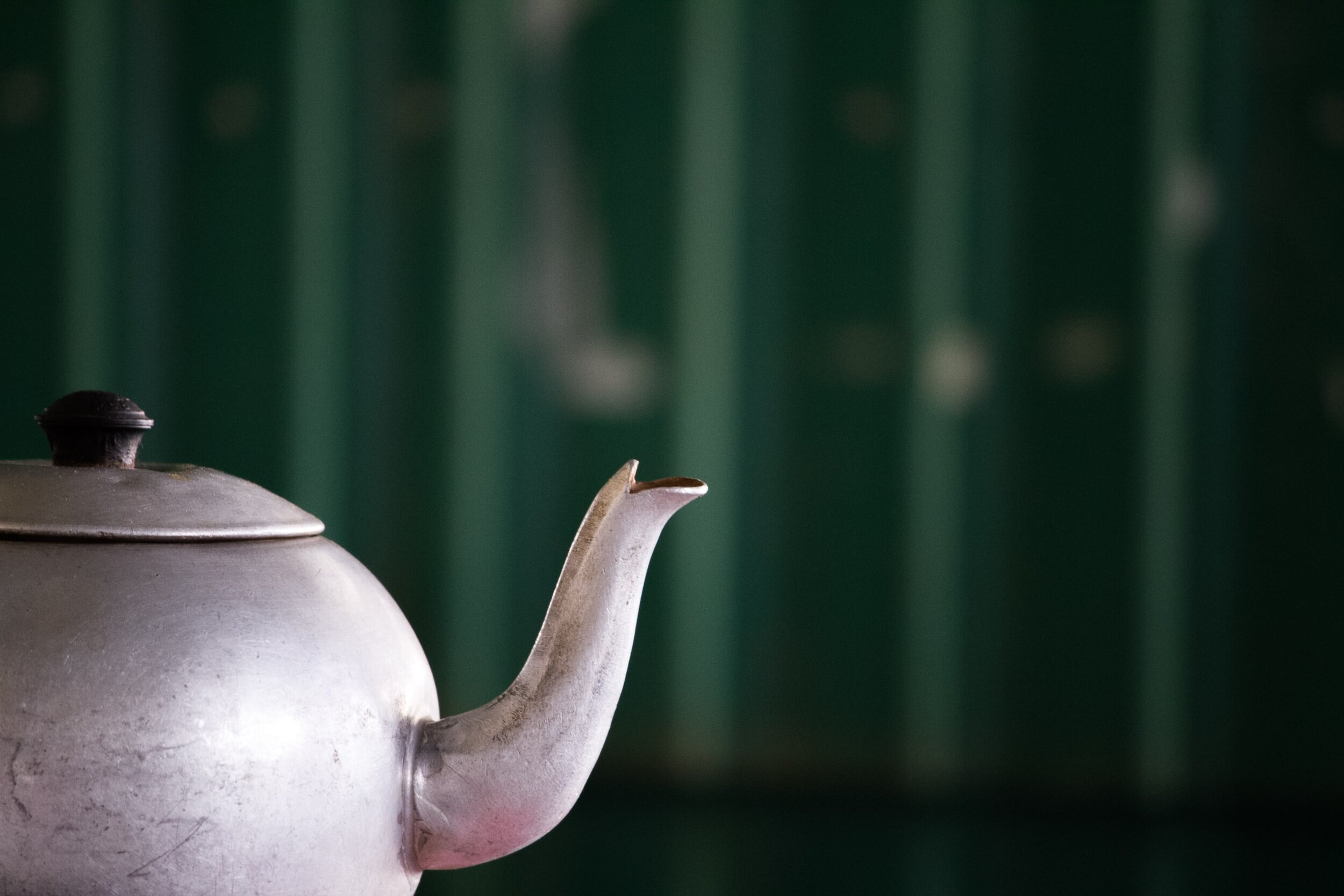WHY YOU SHOULD USE A NETI POT — AND HOW TO DO IT
You might have heard of neti pots in recent years, as this ancient Ayurvedic tool for nasal irrigation makes its way into the Western mainstream. I’ve spoken a lot about how important a healthy mouth is for overall wellbeing, and the nose is just as important. Our noses warm the air we breathe and act as a filter to protect us, but can absorb lots of nasties, especially for those of us who live in major cities or when seasonal allergies flare up. Not to mention if we can’t smell properly, then we can’t taste our food properly, which takes away from being able to eat mindfully and joyfully. Those are just some of the reasons you should consider integrating a neti pot into your routine — keep reading to get stuck in.
WHAT IS A NETI POT, ACTUALLY?
Made out of ceramic, stainless steel, copper or even plastic, a neti pot looks like a little teapot with a long spout. You fill it up with a saline solution, which is then poured into each nostril in turn to help clear your nasal passages. The salt helps to bring out the nasal fluids, where water alone would just be absorbed into the nasal cavities.
WHAT ARE THE BENEFITS?
A neti pot helps cleanse your sinuses and avoid or soothe inflammation, especially as a result of seasonal colds, allergies or pollution. Other benefits include reducing nasal dryness and snoring, easing sinus headaches, allowing for deeper breathing and more. It’s most effective as a preventative measure, as it can be difficult to do once you’re already congested.
HOW DO YOU USE A NETI POT?
Many neti pots will come with ready-to-use saline packets and instructions for how much water to mix them with, but you can also make your own saline solution using half a teaspoon of salt to each cup of water. Make sure to use the purest water you can (distilled, filtered, bottled or boiled and cooled tap water), mixed with non-iodised salt, to avoid irritation. It’s best to mix the solution in a different vessel before pouring it into the neti pot to avoid any undissolved grains of salt.
Once your solution is in the pot, lean over a sink and tilt your head to one side. Insert the spout of the pot into the nostril that’s highest. Tip the pot so the solution flows into your nostril, all while breathing through your mouth. The solution will come out of your other nostril, so make sure you’re still over the sink. Once you’ve used all the solution, take the spout out of your nostril, breathe through your nose and repeat on the other side.
NY-based Ayurvedic Doctor Nidhi Pandya always recommends teaming neti practice with a steam — beforehand if super congested otherwise afterwards, in order to help remove mucus, and not to shower too close to doing a neti practice — leave at least 30 minutes before going for a wash. Follow with nasya, a nasal treatment that can take many forms, including powders, medicated milk and oils — try this 27-herb oil blend with applicator which you sniff up your nose and find the refill here. Otherwise, after using a neti pot, try inserting a little ghee or pure organic and preferably “cured” or “ripened” (to ensure that it penetrates properly) sesame oil into the nostrils with a finger to nourish and soothe the delicate nasal tissue.
HOW OFTEN SHOULD YOU USE IT?
As mentioned, a neti pot is best as a preventative measure — though you can still use it if you’re congested. Though it might sound like a lot of work, those with nasal issues can manage their symptoms considerably with this practice! Use one if you have sinus problems, snoring issues or seasonal allergies. It’s best done in the morning to avoid drainage while you sleep at night. Do it once or twice a week to start, but if you feel you need more, you can go up to once a day once you’re used to it (just avoid doing it too close to bedtime).
Make sure not to overdo it as this can create dryness — remember the dose makes the medicine or the poison! Don’t use a neti pot for more than 3 weeks at a time. Use water that’s boiled (not necessary for distilled but do warm it) then cooled to slightly warmer than room temperature (body temperature). Nidhi reminds us that those who have a deviated nasal septum should be careful with using a neti pot as water can get clogged and start to ferment leading to sinus infections. Do not share your neti pot with someone else even if it’s been disinfected, and don’t treat children under 2 with one. For older children, consult a pediatrician and if pregnant it is best to avoid trying new practices without the guidance of an Ayurvedic practitioner.
In terms of fitting this practice into your Dinacharya, use a neti pot after the initial tooth brushing, tongue cleaning, oil pulling and Abhyanga (if doing) and before exercise and shower.
GET YOUR OWN NETI POT
Now that you know what a neti pot is all about, it’s time to get equipped! Check out these picks:


